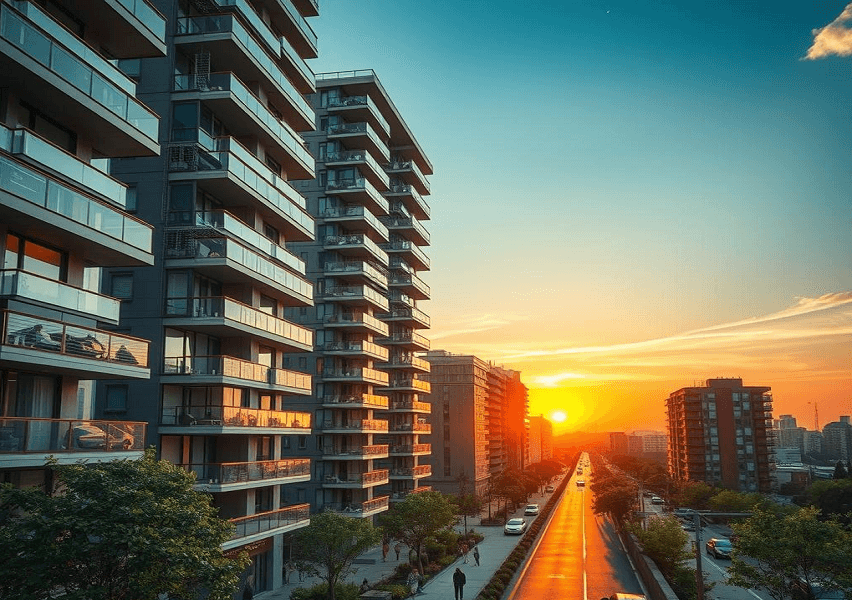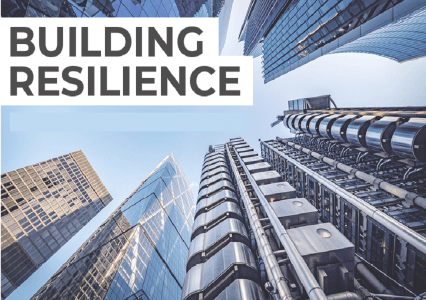
“Urbanization is the inevitable outcome of the processes of growth and processes of modernization”
This quote emphasizes the significance of urbanization and the impact it has on human existence. Major cities across the world are growing rapidly, and thus the need for efficient, sustainable, and technologically advanced urban spaces is more urgent than ever.
In response, smart cities are emerging as the future of urban living. By integrating cutting-edge technology with urban planning, smart cities aim to optimize resources, improve quality of life, and reshape real estate markets. India is at the forefront of this transformation, with its Smart Cities Mission leading the way.
Here’s how smart cities are reshaping the real estate landscape and what the future holds.
WHAT DEFINES A SMART CITY?
A smart city uses technology and data analytics to enhance the quality of urban services, including transportation, energy, water management, and waste disposal. Through connected infrastructure, smart cities create efficient, livable spaces that promote sustainability, convenience, and economic growth. The four pillars of smart cities—sustainability, mobility, infrastructure, and governance—are transforming how we interact with the urban environment, and consequently, how real estate is developed and valued.
Key Features of Smart Cities:
- IoT (Internet of Things) Networks: Connect devices, buildings, and services for real-time monitoring and management.
- Smart Mobility: Electric vehicles, shared transportation, and intelligent traffic management systems.
- Energy Efficiency: Smart grids, renewable energy, and energy-efficient buildings.
- Sustainable Living: Waste reduction, water conservation, and eco-friendly urban design.
- Data-Driven Governance: Digital platforms for managing city services and enabling citizen participation.
TECHNOLOGY-DRIVEN REAL ESTATE DEVELOPMENT
Smart technology is changing how real estate is designed, built, and operated. Developers are now incorporating features that cater to the tech-savvy needs of smart city residents. The result is a rise in smart buildings that are sustainable, energy-efficient, and connected to city-wide digital systems.
Key Impacts on Real Estate:
- Smart Homes: Equipped with IoT devices for automated lighting, heating, and security, smart homes enhance comfort, reduce energy consumption, and provide real-time data for homeowners.
- Green Buildings: Smart cities prioritize LEED-certified or eco-friendly buildings with solar panels, rainwater harvesting systems, and energy-efficient materials.
- Mixed-Use Developments: Smart cities encourage compact, mixed-use developments that combine residential, commercial, and recreational spaces. This allows for greater walkability, reduced travel time, and efficient land use.
- Digital Infrastructure: Properties in smart cities are equipped with high-speed internet, smart metering, and centralized energy management systems.
Example: In India, cities like Pune, Kochi, and Bhubaneswar are leading with smart developments that integrate technology for energy savings, traffic management, and safety.
ENHANCED MOBILITY AND ACCESSIBILITY: Smart cities aim to improve mobility through intelligent transportation systems that reduce congestion, promote public transport, and encourage sustainable modes of travel. These innovations have significant implications for real estate by increasing the value of properties in well-connected areas.
Transportation Solutions:
- Smart Traffic Management: IoT-based systems monitor traffic in real-time, reducing congestion and improving the flow of vehicles. This increases the desirability of residential and commercial areas with seamless access.
- Electric Vehicles (EVs) and Charging Infrastructure: The adoption of electric vehicles is accelerating, prompting the development of real estate with EV charging stations and other green mobility features.
- Public Transit Hubs: Properties near smart transit hubs (e.g., metro stations, smart buses) are in high demand due to enhanced accessibility and reduced travel times.
- Shared Mobility: Bike-sharing, e-scooters, and ride-hailing services are changing the way people commute, leading to reduced parking space requirements and more pedestrian-friendly areas.
Example: Singapore's Marina Bay district is a model of transit-oriented development, where smart transport and pedestrian-friendly streets elevate property values.
4. SUSTAINABILITY AND SMART RESOURCE MANAGEMENT: Sustainability is a core element of smart cities, and real estate plays a central role in reducing environmental impact. Energy-efficient buildings, renewable energy integration, and waste reduction strategies are critical components of urban development in smart cities.
Sustainable Real Estate Trends:
- Energy Efficiency: Buildings are being designed to minimize energy use through advanced insulation, smart thermostats, and solar energy systems.
- Water Management: Smart water meters, greywater recycling systems, and rainwater harvesting are becoming common in urban developments, especially in water-scarce cities.
- Waste Management: Smart waste management systems use sensors to monitor waste levels, optimize collection routes, and reduce landfill usage.
By integrating sustainability into real estate, smart cities are creating eco-friendly neighborhoods that attract environmentally conscious buyers and investors.
Example: Jaipur Smart City has incorporated green building norms and sustainable water management practices, leading to a boom in eco-friendly real estate projects.
DATA-DRIVEN URBAN GOVERNANCE AND CITIZEN PARTICIPATION
One of the standout features of smart cities is their reliance on data analytics and digital platforms to enhance governance and empower citizens. From real-time crime tracking to responsive public services, smart cities use technology to streamline urban management.
Impacts on Real Estate:
- Safer Neighborhoods: With smart surveillance systems, crime detection, and faster emergency responses, smart cities foster safer environments, which in turn drive up property values.
- E-Governance Platforms: These allow residents to access property-related services, such as taxes, permits, and utilities, online. Transparent and efficient governance enhances investor confidence.
- Digital Property Marketplaces: Real estate transactions are increasingly shifting to digital platforms, where buyers can view virtual property tours, access legal documentation, and even complete transactions online.
Example: Dubai’s Smart City initiative includes digital governance, which allows residents to access public services through their smartphones, making the city more attractive to global investors.
THE RISE OF WORK-FROM-ANYWHERE MODELS: The rise of remote work and work-from-anywhere models, accelerated by the pandemic, has transformed the demand for real estate in smart cities. As businesses increasingly adopt flexible work environments, the focus is shifting toward properties that offer superior digital connectivity, green spaces, and lifestyle amenities.
Changing Real Estate Preferences:
- Smart Workspaces: Co-working spaces equipped with high-speed internet, collaborative environments, and flexible leasing terms are becoming integral to urban real estate.
- Suburban and Satellite Towns: As professionals seek a better work-life balance, there is growing demand for suburban homes with smart amenities and high connectivity to urban centers.
- Tech-Ready Homes: Homes with built-in office spaces, high-speed internet, and smart home features are increasingly desirable for remote workers.
Example: Gurgaon, a satellite city of Delhi, has become a hub for tech-driven co-working spaces and tech-friendly residential areas due to its smart city infrastructure.
7. INVESTMENT OPPORTUNITIES IN SMART CITIES: Smart cities offer lucrative opportunities for real estate investors. As infrastructure improves and cities become more efficient, property values in smart cities are expected to appreciate rapidly. Developers and investors are focusing on sustainable developments, tech-integrated properties, and mixed-use projects to meet the demands of future urban living.
Key Investment Areas:
- Residential Real Estate: Demand for smart homes with advanced technology and green features is rising, especially among younger buyers.
- Commercial Real Estate: Offices and retail spaces with tech-enabled features, like AI-driven security systems, are seeing increased demand from businesses.
- Infrastructure Development: Investment in smart infrastructure, including energy grids, water systems, and transportation networks, is driving up land values.
Conclusion: A New Era of Real Estate: Smart cities are leading a paradigm shift in how urban spaces are developed and managed. By incorporating technology, sustainability, and enhanced mobility, these cities are transforming the real estate landscape. For developers, investors, and residents, the rise of smart cities promises more efficient, connected, and livable urban environments.
As India and the rest of the world continue to develop smart cities, real estate will play a pivotal role in shaping the future of urban living—one that balances growth with sustainability, innovation, and quality of life.


